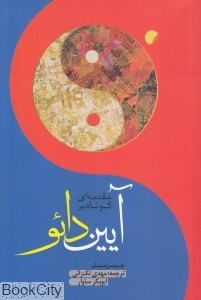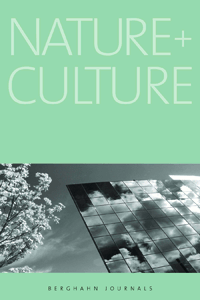道教与可持续发展
苗建时(James Miller) 加拿大女王大学 一、道教概论 道教是中国本土的有系统的宗教体系。道家重点关注获得“道”(作为不断变化的宇宙中的生命力不可名状的源头)。在道教2000多年的历史上,实现这一目标的方法虽然经过修正和调整,但大体可以理解为在身体的流体能量、社群和宇宙三者之间进行调整。道教关注内在身体的微妙能量,并且从事于冥想修炼的活动,旨在恢复和增强身体的机能,以获得长寿和精神超越。道家还崇拜等级复杂的神圣权力,包括最高层的三清(道本身的自然化体现)以及许多个人神(曾经是人,但在其生命的轨迹中实现了超越,有时也被理解为不朽)。 从旁观者的角度来看,道教有两个明显的特点:致力于获得道的道士精英;融入当地社会并由俗人赞助的社群传统。精英传统集中于维护不同谱系的教义,并向相对少数的因其宗教热忱被认为有资质的道士传播这些教义。这种精英传统是神秘的,因为其教义的内容通常不会传到俗人之中,并且这一传统通常具有等级结构,因此道士在接受更高层次教义的学习之前必须展示出在较低层次教义的学习过程中取得的成就。这种精英传统在定义上就有些模糊,并且往往小心翼翼地保护其独特的身份以及神圣的权威。 但与此同时,道教也包含了中国普遍的宗教传统:极少关注宗教之间的差别。在这一传统中,俗人给寺庙捐款以祈求好运、纪念季节的变化以及为逝者举行的仪式。给庙宇捐款并享受这种服务的人可能根本不知道他们的庙宇到底是道教的、佛教的还是其他宗教的。最主要的是,他们认为寺庙是有灵性的。但是,在这种普通的宗教架构中,也有道教特有的葬礼和祛邪仪式,这些仪式需要与众不同的道教神仙并且具有显著的道教特征,训练有素的观察者很容易看出。最有特色的道教仪式是醮,通常是一个复杂的多天活动,旨在恢复社群和宇宙之间的平衡。最为隆重的是每六十年才举行一次的宇宙再生仪式,旨在纪念中国历法一个新的周期的开始。 但从内部角度来看,道士一般根据自己不同的谱系(每个谱系都有自己的神圣权威)来给自己归类。道士是通过师傅教导、学习神圣的经文和教义来掌握道教传统。历史上,这些不同的传统往往集中于特定的圣山,故而山的名字被频繁提及。因此,一些道教谱系往往在中国不同的区域都有据点,有时这些隶属关系一直保持着自己不同的历史和地理特点。但是在现代,所有道教谱系和形式都越来越呈现集中化、国有化和官僚化的特点,集中由一个单一的组织框架——中国道教协会(CDA)所领导。中国道教协会位于北京白云观,白云观是统治北方道教的全真教最为重要的道观之一。为此,当代道教在国家层面趋于反映精英道士的形式,虽然在历史上,这只是一个比较晚的道教运动,它并没有真正代表整个道教传统。中国道教协会本身是受到国家宗教事务局(SARA)监管的。 二、现代性、和谐和发展 从21世纪初以来,发展,尤其是科学发展的概念成为现代中国人倡导的意识形态的关键词。但是,这些革命性词语却与早先关于人类社会基本功能的概念性框架,人类社会与自然环境和宇宙之间的关系是恰恰相对立的。现代的发展概念主要是基于时间的线性理论,时间线性理论认为人类活动以一种累积的、有意义的方式实现一些最终目标或意图。在二千多年前董仲舒所奠定的中国传统政治理论中,这并不是一种被普遍接受的看法,中国传统政治理论认为天、人、地三者之间存在一种相互性和感应性。在这种观点看来,皇帝的神圣义务是施行礼仪以确保天、地、人三者之间的正相关性,从而带来最大的繁荣。事实上,皇帝的成功在一部分被认为有赖于皇帝为矫正人类与宇宙间周期性不平衡而举行的礼仪活动(参见Miller 2012a)。在这种观点看来,宗教起着调节性的功能:把万物调整到合适的位置,以创造一个平衡稳定的有机体。这种周期性的观点甚至在中国传统测量时间的体系中也得以体现,传统中国测量时间的体系基于黄道十二宫的十二生肖和五行,因此时钟每六十年需重调一次。 因此,我们完全可以理解为何现代中国人把“发展”当作一个革命性的概念,它的目标不再是指天、地、人三者之间关系的周期性调整,而是为达成某种积极目标而进行的无情转化。 这种“发展”观所认识的进步与中国传统观点尤其是儒家和道家所认识的进步是相反的,这也是为何这些传统被中国近代革命者所特别批判的原因之一。这在中国共产党的创始人陈独秀(1879-1942)的作品中可以得到鲜明体现,陈独秀在一篇著名的文章中提出中国革命者的四大主要特征:独立而不屈从;进步而不保守;激进而不胆怯;世界性而不孤立(Lawrance 2004: 2-3)。以这四个标准来看,中国的宗教尤其是道教是不合格的。 就如所有的宗教一样,道教具有保守因素。但是从精神角度来看,道士可能认为他们提倡的是独立而不是服从,道教的制度结构是基于等级制来设计的,在其中学生不能简单地“认为”他们的方法就是开悟,而必须由老师教导并由宗教团体对其进步予以确认来获得开悟。第二,道教精英旨在通过传播经典文本维护其权威性,并使用几百年前就已形成的价值及信念灌输给年轻一代。以此来看,道教很难被认为是“进步的”运动。第三,道士以在偏远山区以及远离人类社会的习俗以寻求庇护而闻名。同时,道士明确反对侵略并珍视不干涉主义者的行为。最后,道教倾向于重视内在精神生活。他们不是传教士,一般来说也不寻求改变外部世界。毫无疑问,陈独秀会认为道教所持的态度是孤立的。从陈独秀所列举的四大特征来看,我们就很容易明白为何道教被他列入负面一类。因此,从陈独秀的观点来看,道教对于发展是毫无益处的。 马克思认为宗教是一种麻醉剂,这使得宗教阻碍发展的观点变得更糟糕。依这种观点来看,道教就如其他宗教不仅仅是一套在意识形态上反对社会发展的价值和信仰。宗教还具有阻碍社会发展的社会功能。由于现代中国人广泛接受这种宗教观,所以他们把宗教视为政治革命、社会经济进步和科学发展的敌人就不足为奇了。因此,中国的共产主义革命者从事反传统运动以摧毁庙宇、诋毁孔子和消除一切他们认为是反科学唯物主义的迷信思想也是不足为奇的。 这种反宗教的思维决不局限于现代共产党人。杜赞奇(1991)详细介绍了二十世纪上半叶民族主义如何与本地宗教势力之间的冲突。例如,袁世凯通过占用当地寺庙财产和建立学校与政府办公室来代替他们,“试图系统地拆除民间宗教的制度基础”(杜赞奇,1991:76)。现代民族主义者进一步利用宗教和迷信之间的政治区别来试图集中新出现的共产主义地区的权力。20年代末和30年代初期的反迷信活动,禁止诸如风水学和相面术等流行宗教习俗,同时倡导崇拜诸如孔子和老子等全民性人物。正如杜赞奇(1991:80)所说,这样做的效果是通过将“合法”的宗教活动控制在国家手中,以巩固国家权力对地方社会的统治,同时将那些不容易控制的流行活动剔除出宗教的定义之外。涉及魅力和护身符等“迷信”活动也与秘密社团和当地宗教组织相关,它也历来充当异议对抗中央权力。 在与文革(1966-1976)相关的强硬左派政策结束之后,合法的宗教组织和流行的“迷信”活动之间在意识形态上的区别在邓小平时代仍然得以维持。国家宗教协会得以恢复,处于宗教事务局(现为国家宗教事务局)的监管之下。但是随后国家强调宗教的实用性而非意识形态性,考虑宗教活动在中国持续发展的作用。宗教领袖如今是中央人民政治协商会议(政协)的一部分,共产党反而形成了一个广泛的统治精英的联盟,其中就包括宗教界人士,共产党也依赖他们以维持其合法性。这就使得我们要从广泛的社会文化角度而不是纯粹的意识形态角度来重新认识宗教,重新思考宗教可能为社会发展所做出的积极贡献。按照葛兰西对于“文化”部门价值的看法(Zeng 2011:773),中国领导人已重新考虑中国传统文化的价值,重新恢复孔子的名誉,并允许法定宗教的公开运作,同时也密切监视不良的宗教和文化现象。随之产生“宗教热”在撤销和恢复没收宗教财产和资助法定宗教组织(768)的经营费用等方面已耗费了政府大量资金。 与此同时,经济快速发展的目标也增加了诸如“和谐”,“精神文明”等“回归未来”的美德。如此强调精神和文化是旨在确保广泛的社会稳定,并打击官员腐败以及持不同政见者的社会运动。 三、社群福祉 暂且不论现代时期对道教的主导叙事,我们可以研究道教在历史上与当地社区在社会和经济发展上的互动的方式。最早的我们对其有清晰认识的道教社群被称为正一道,并且作为神权政治自公元142年开始在中国西南地区运作了70年。与常见的最传统的中国社会一样,它以集体为基础,向各家各户每年征税,并设立规定来管理维护公共环境,例如不大肆砍伐树木,采摘花草,挖孔或破坏湿地(施舟人2001: 81)。毫无疑问,这种对公共场所的关心对整个社群的福祉有利,并可能反映出中国社会高度重视群体利益的这一特性。根据施舟人(2001:89)的分析,然而,他们利用的这些禁令是从一个更早时期的传统中借鉴来的,这些禁令“根植于对封建社会的排斥以及城邦的公共崇拜的礼仪习俗。”也就是说,社群的道德基础是一个基于一种有不同仪式生活的不同社会的存在感。因此,从这个意义上说,这些最早的道教团体往往是周边社群,他们拒绝传统的社会秩序,倡导基于简单的社群和自然的神圣空间的生活。 但是,随着道教变得更加融入中国主流社会,它往往与当地的宗教组织融合,深入中国人民共同的宗教生活之中。在随后出版的著作中,席佩尔(2008年)论证中国宗教生活都发生在道教这个主要框架之中。但是,在从边缘过渡到主流,带来的是当地社会与宗教团体之间关系的变化。特别是,(清月)的“纯度公约”规定不需要给道教诸神提供动物祭祀,并且道士不拿工资。由于后一个原因,庙宇是由集体而非道士群体所有和提供资助的。因此,相对于以从属关系为基础的宗教,在这种宗教中,人们要为与世俗社会完全不同、受一群宗教专业特殊人才统治的宗教组织付税,中国人创办的社区协会(会)或共同管理组织(公司)来管理他们的集体宗教生活。其结果是“宗教”活动与其他地方的经济、教育和慈善活动之间的差距变得更难辨别。例如,这些社区团体为了社会福祉而成为当地财富的重要管理者。为符合其最初的宗教动机,其中一些资金通常专门用于宗教活动,但在许多情况下较大比例的钱可能会转到当地企业或教育活动中去。 尽管20世纪地方宗教和“迷信”活动遭到很多打击,但地方宗教群体仍是中国乡村发展的重要驱动因素。例如,Tsai (2002)提供了证据,说明庙宇或有关组织积极发起和管理中国大陆村级农村发展项目。例如,在福建省的一个研究基地,一村庙委员会承担起了修路的责任。从2000年每年捐赠给寺庙的40万元中,寺庙委员会负责铺设四条道路以及建设篮球场的费用(11)。Tsai得出积极的结论,即“利用社区的社会机构来提供乡村服务使得高压战略完全没有必要,同时还给公民赋权,使他们参与到公民生活中”(24)。当宗教组织被整个社会所拥有,他们就能够在地方发展中起到作用。在这种情况下,政府主管部门就不会将这种地方宗教组织归为“迷信”,而是将其置于政府的监管之下,以使其成为官方授权的宗教场所(Chau 2005:245) 。 地方宗教活动的积极影响可能跟关于宗教活动的社会功能的传统理论刚好相反,宗教礼仪通常与中国乡村社会的节日时间联系在一起。就如 Tam(2006:78)解释道,中国乡村生活的节奏通常分为以劳动和商业是首的“平时时间”和强调娱乐休闲和社会交往的“节日时间”。因此,从经济发展的角度来看,当地节日的礼仪活动可能似乎与重大的经济发展所起的作用刚好相反。除了进行宗教仪式、演出歌剧以及主持奢侈的宴会所需的大量费用之外,节日时间并不产生许多直接的经济活动。中国传统对于这些相对经济不活跃的时间的价值的解释是,这是“让弓放松”(79)的时刻,也就是说,这是宁静而不活动的时刻,而非紧张的经济活动的时刻。 但是Chau (2005)质疑关于宗教活动对于经济无益的传统观点。他在中国西北地区的实地考察表明地方庙宇协会采取社会捐赠的方式广泛参与了经济、慈善和教育活动: 除了是个人和集体敬拜的地方,寺庙也是一个政治、经济和象征性的资源,也是这种 资源的发源地。一个建设得好的庙宇和踊跃参加庙会不仅证明神的功效,而且也能证明寺庙协会和社区的组织能力。(Chau 2005: 238) 就如Laliberté et al....
Read the full post »







